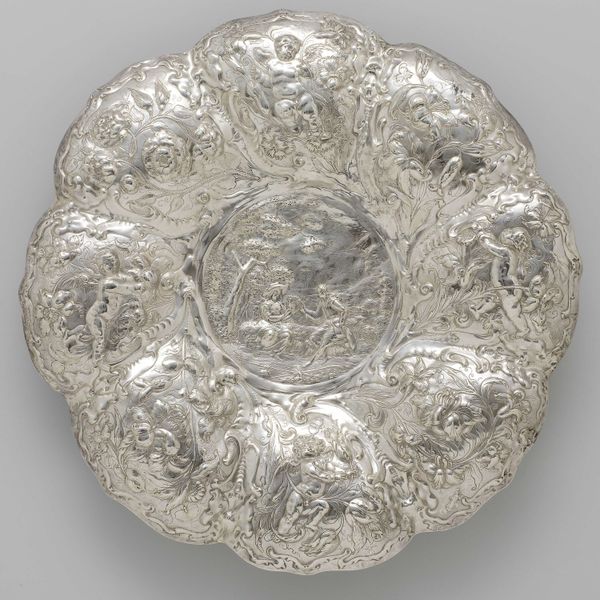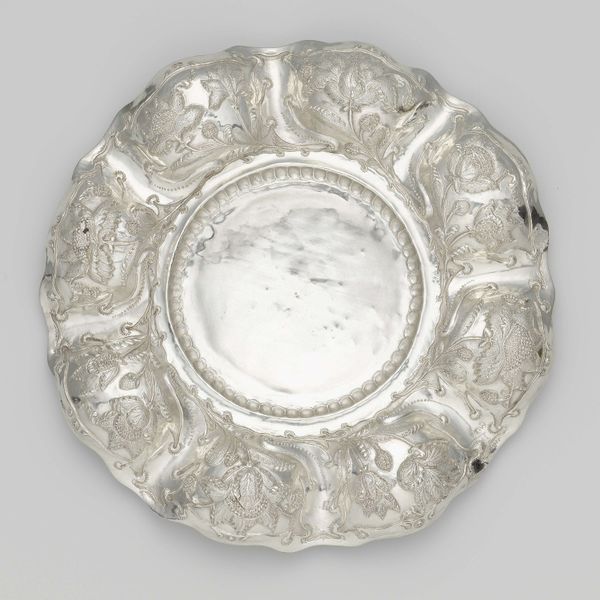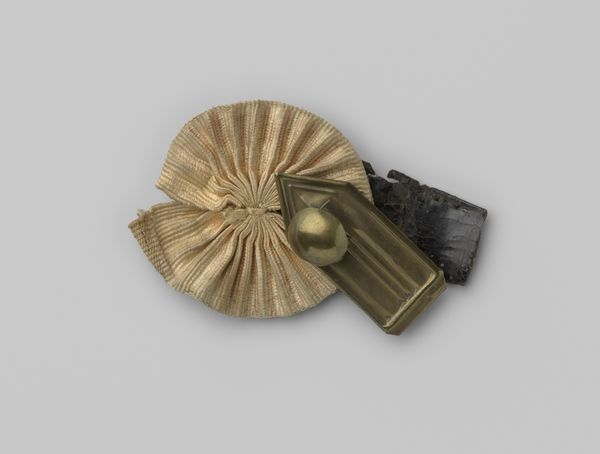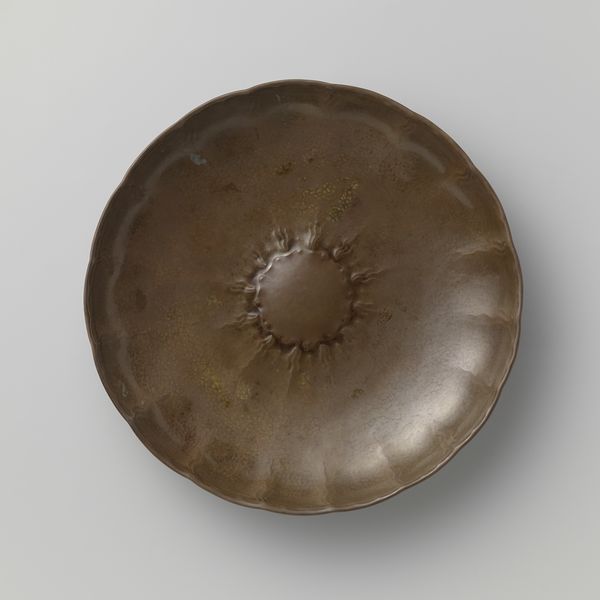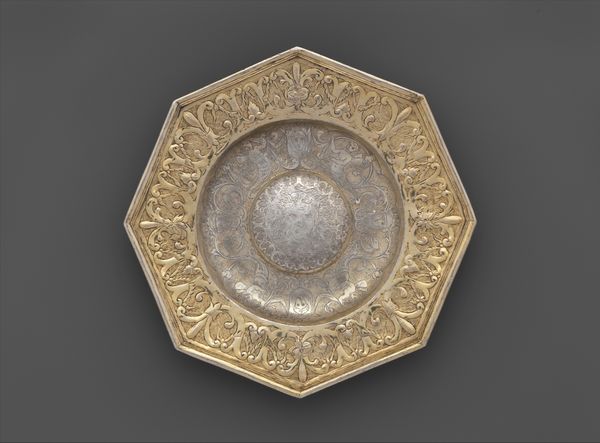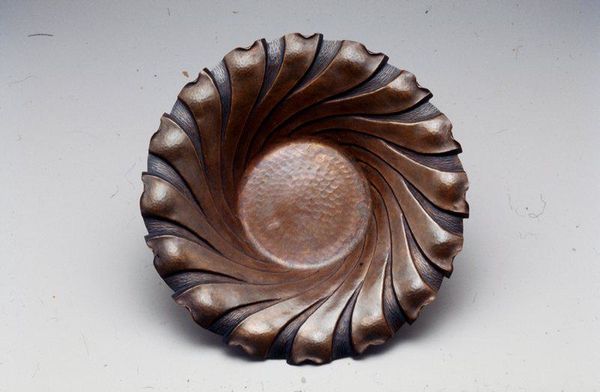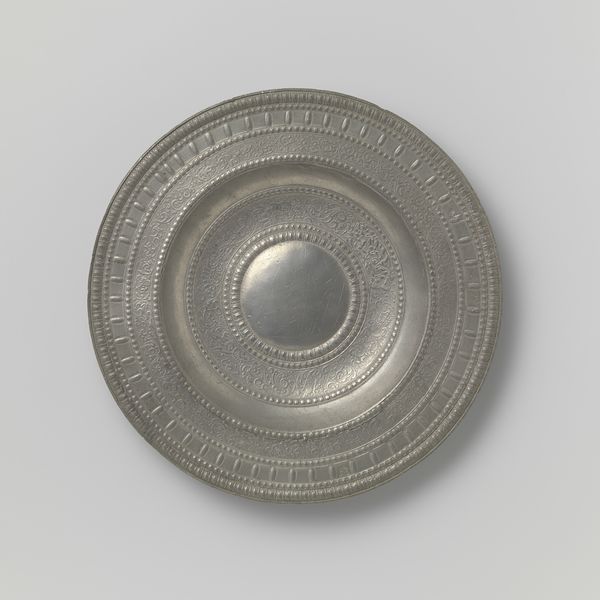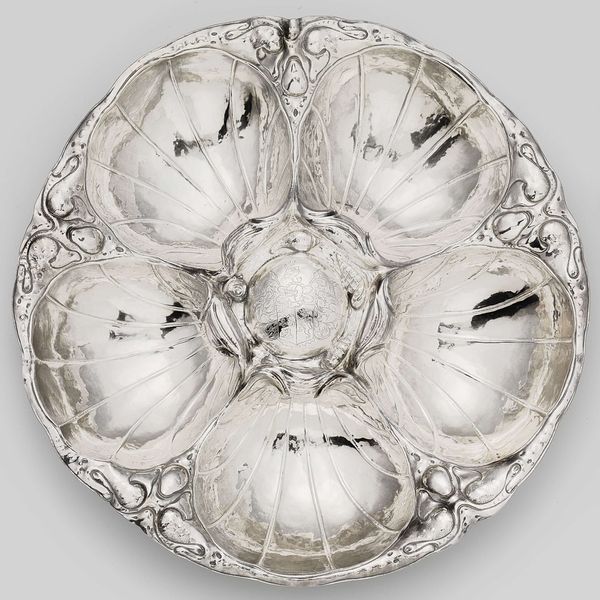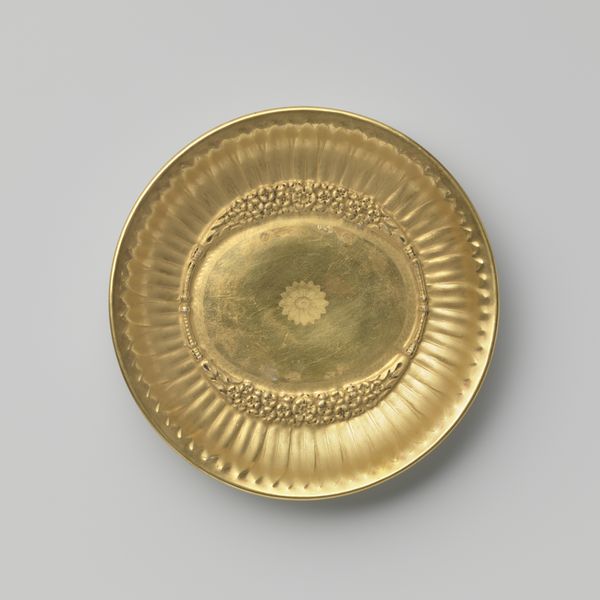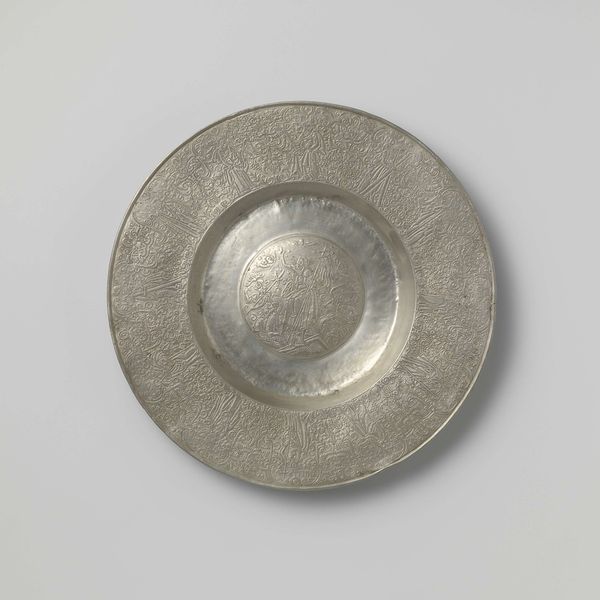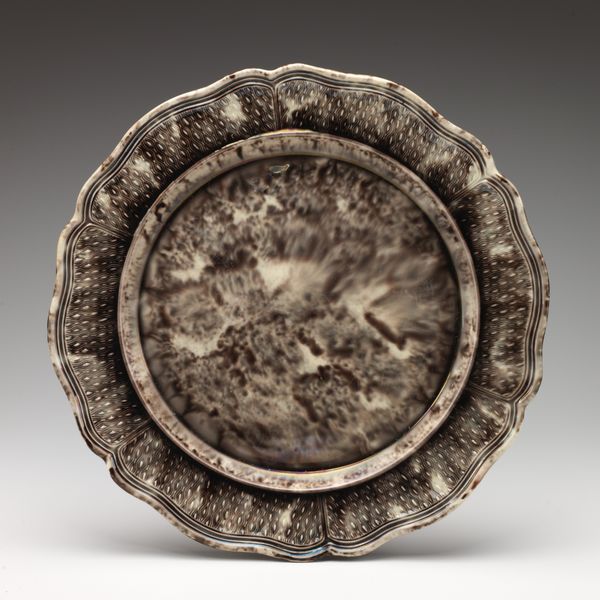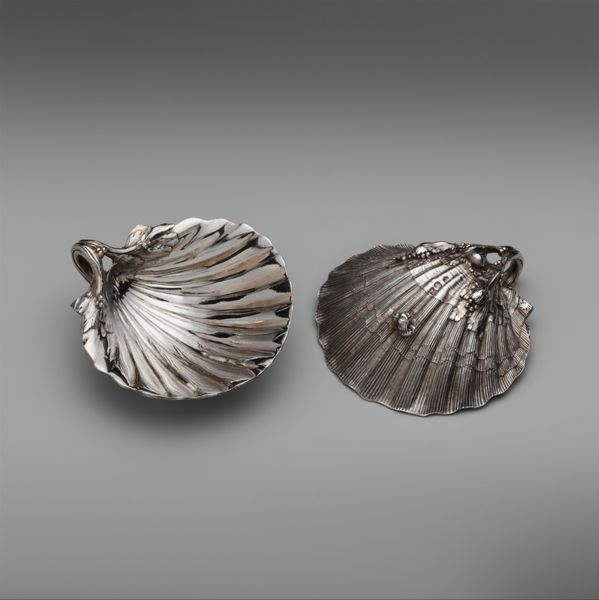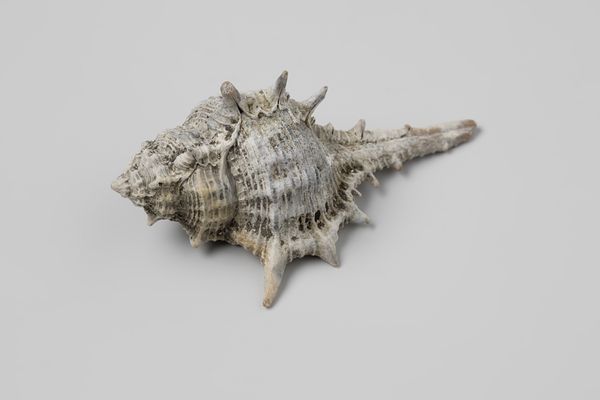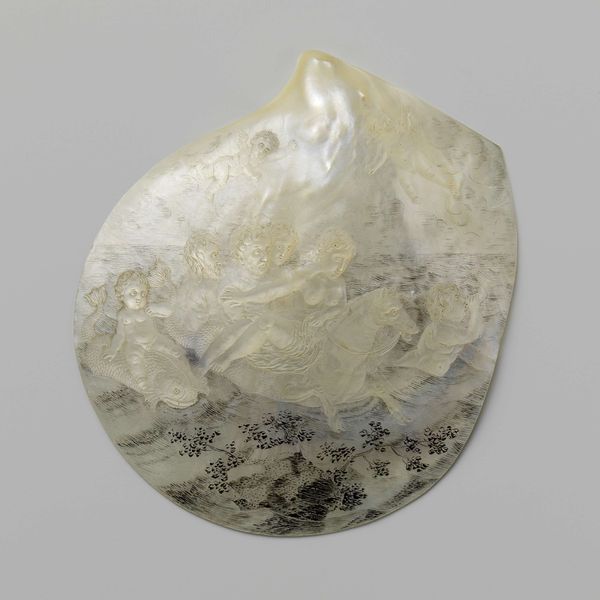
Schaal, rond, met gevoluteerde bovenrand, geheel voorzien van fijne hamerstructuur 1921
0:00
0:00
Dimensions: height 1.9 cm, diameter 16.5 cm, weight 175.0 gr
Copyright: Rijks Museum: Open Domain
Editor: So, here we have "Schaal, rond, met gevoluteerde bovenrand, geheel voorzien van fijne hamerstructuur"—that’s "Round bowl with voluted upper edge, entirely with fine hammer structure"—made in 1921 by Frans Zwollo. It's a silver metal sculpture currently held at the Rijksmuseum. The hammering creates this incredible texture; it's so tactile. What do you see in this piece? Curator: What immediately strikes me is how Zwollo takes a seemingly simple, decorative object and imbues it with the complex dialogue of its time. Art Nouveau was on the wane, but its emphasis on natural forms and craft still resonated. This piece bridges the gap between the handcrafted and the burgeoning machine age. Consider the social context: post-World War I, a desire for both beauty and functionality defined artistic production. Editor: So, you're saying the very act of hammering is a political statement? Curator: Absolutely! It's a rejection of mass production, a reclaiming of the artist's hand. The spiral motif, though seemingly abstract, draws from nature. But look closer, does this idealization exclude any perspectives? What narratives are left unheard through material choices alone? Silver carries its own legacy of privilege and resource extraction. Editor: I hadn’t thought of it that way. It makes me question my own interpretation of the piece as simply beautiful. Curator: Exactly! Art exists within these systems. Analyzing design and social movements provides a crucial lens. Editor: That gives me a lot to think about – the bowl becomes less about decoration, and more about a specific moment in cultural history. Curator: It is about material choices, and aesthetic intention, and, crucially, about understanding art as a product of a very specific time, a time filled with tensions, longings, and power dynamics.
Comments
No comments
Be the first to comment and join the conversation on the ultimate creative platform.
